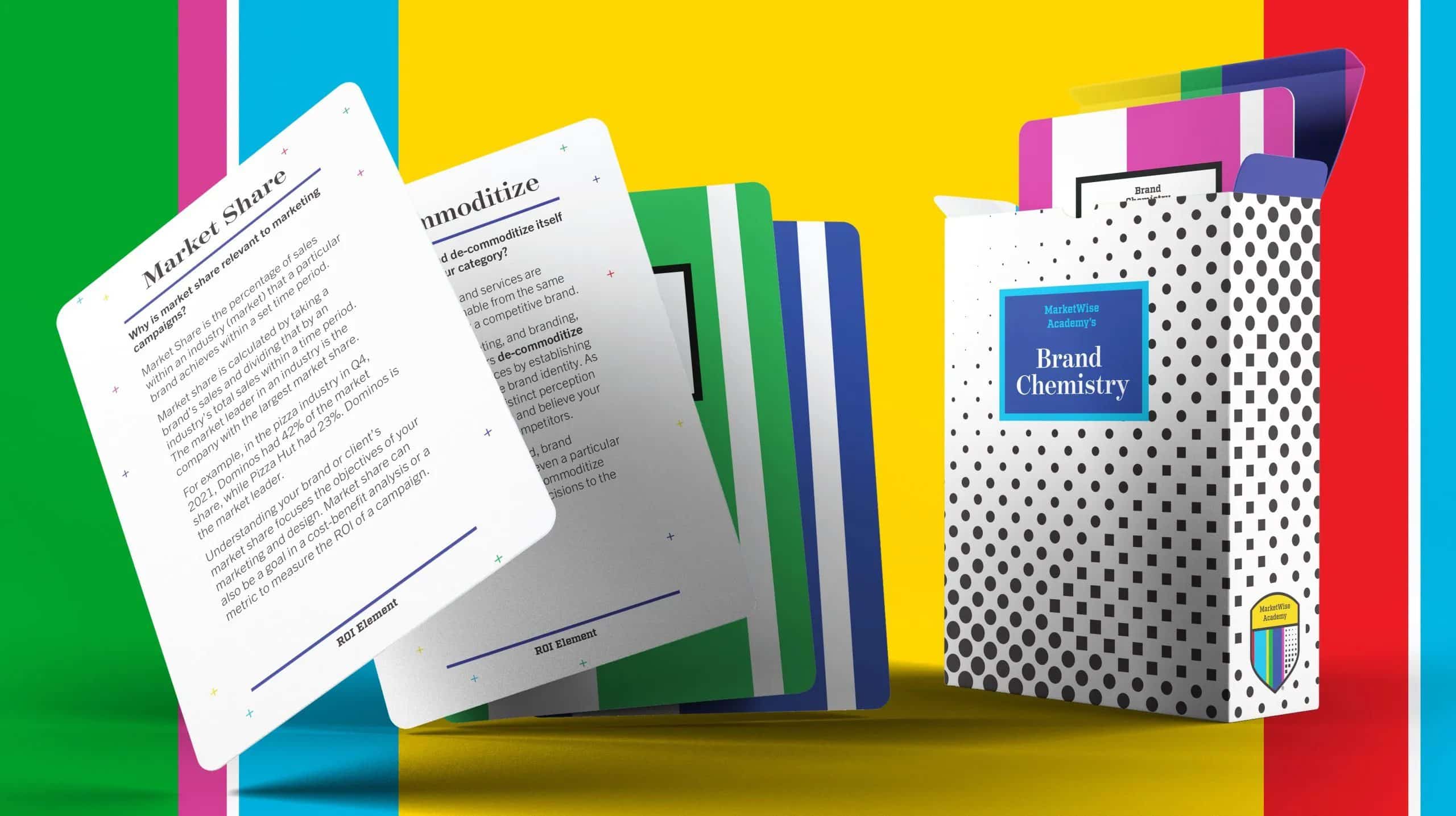In Part 1 of this series, I introduced The Business 6,™ a very short glossary of the top six business terms that help creatives shift a conversation from a subjective opinion on the aesthetics of a design to an objective analysis of how the design will help a business achieve its goals. When we integrate these terms in client conversations and meetings, we amplify our credibility, our influence, and our impact as a strategic business partner – beyond our role as a designer. I have experienced it in action over and over again: clients hear our design input with more receptive ears when we share it in their language – the Language of Business™.
The reason is simple: typically our clients are not creatives. Instead, they may be from finance, marketing, or operations, and they are focused on customer acquisition, growth indicators, and other business targets. Talking with clients and stakeholders in the Language of Business transforms a design project from a creative endeavor to an investment in design as a strategic business initiative. These kinds of integrated business conversations may also give your clients the confidence to experiment and take more creative risks – something I view as a win-win.
What’s next?
In the previous article, I covered the first two terms of The Business 6: revenue (and several revenue-associated terms) and margin. In this article, let’s talk about market share and de-commoditize.
Market share driven by design
Market share is the percentage of sales within an industry that a particular brand achieves over a set period of time. For example, Domino’s, Papa John’s and Pizza Hut each has a certain market share in the pizza industry. Brands try to grow their market share through a variety of channels, campaigns, touchpoints, etc. This can lead to a healthy design budget, but that also comes with some tight accountability in a short amount of time. As a designer, if the goal of the piece is to increase market share, you’ll want to ask specific questions about competitors, market leaders, timeframes, and what it means for the brand to be #1, #2 or #3 in the category. Related to design, how willing is your client to disrupt the category and escape the “sea of sameness” and “blanding?” At that point, all design decisions are going toward the goal of capturing market share.
If we understand market share and how it relates to a client’s business measurements, then we can have a deeper conversation with our clients about how the design we’re proposing can drive that. For example, I may strongly suggest a tactile effect on a packaging design because research points to specific design elements and tactile finishes that can increase consumer engagement.[1] My clients begin to understand that the additional expense for a certain element may be offset by purchases that lead to gains in market share.
Notice that these conversations are less about the specifics of typography, color, layout, and finishing, and more about brand personality, messaging and clarity, within the context of the client’s business goals. The conversation shifts away from the granularity of our designs – after all, they hired us for our expertise as a creative professional – and instead, together we are treating design as a strategic business investment. We are showing up as a true partner, providing solutions to help our clients achieve their business goals through design.
The importance of de-commoditizing to differentiate
De-commoditize is a cousin to “differentiate.” Branding, by its very nature, differentiates and de-commoditizes. For example, branding took the product and technology of an mp3 portable music player and de-commoditized it to “1,000 songs, right in my pocket.”[2] Branding helps drive us to choose Apple over Microsoft, Coke over Pepsi, Puffs over Kleenex. In contrast, a commodity is typically not branded. When you walk into a hardware store to get carpenter nails, for example, you just pick out the size and type you need. The nails are a commodity; they’re not branded. They are often simply stored loose in bins. You’re buying them based on size, application and price.
To illustrate further how branding and packaging can de-commoditize a product, let’s consider basil. If we look at a pile of dried basil that’s not packaged, there is no doubt that it is a commodity.[3] We’re thinking, “basil is basil.” But companies like McCormick & Company, Simply Organic, Spice Islands and others package basil differently so it’s elevated in the consumer’s mind. For example, McCormick has added a grinder to its dried basil packaging and it is able to charge about $11 an ounce (instead of $.50 to $2 an ounce, the average price of loose dried basil without branding). In this case, the packaging contributed to McCormick’s pricing strategy and its premium positioning.
It’s not design; it’s design strategy
It’s not enough to know The Business 6. We also need to know how to use these terms to collaborate and strategize with our clients. Listen as your clients talk about their business challenges and objectives. Ask questions. Explain why the work you do has the potential to achieve their goals. Share success stories from your other projects. And keep the conversation focused on The Language of Business and the value you bring to support your clients’ business goals.
Join me next time as we dive into the last two terms in The Business 6: Customer Value and Return on Investment (ROI).
[1] https://www.sciencedirect.com/science/article/abs/pii/S0969698919303042
[2] https://www.youtube.com/watch?v=gd_1TPhmFLc&ab_channel=appleipodboss
[3] For an illustration of this example, check out this video by Dr. Andrew Hurley, Associate Professor of Packaging Science, Clemson University: https://www.youtube.com/watch?v=KHll9z_-g9o


